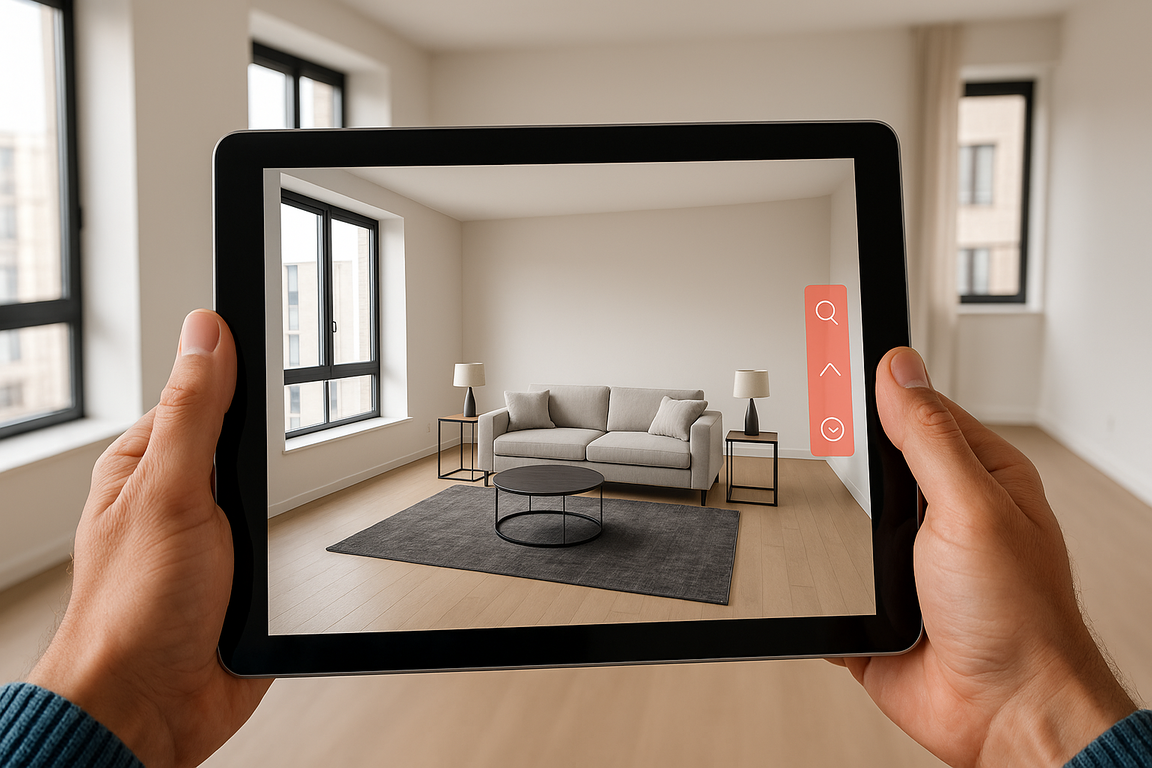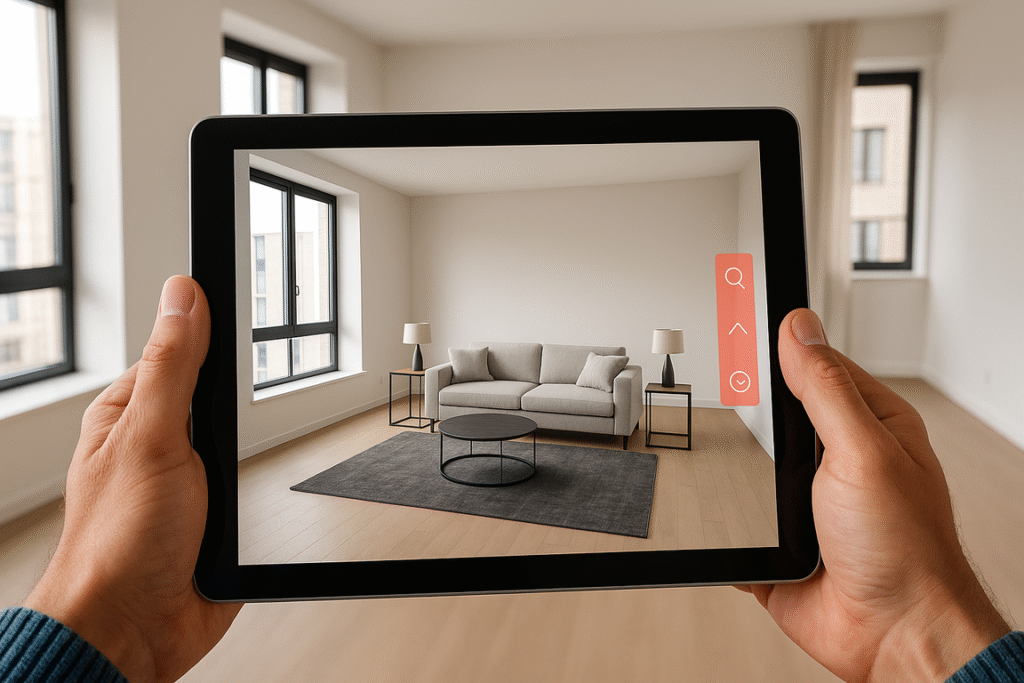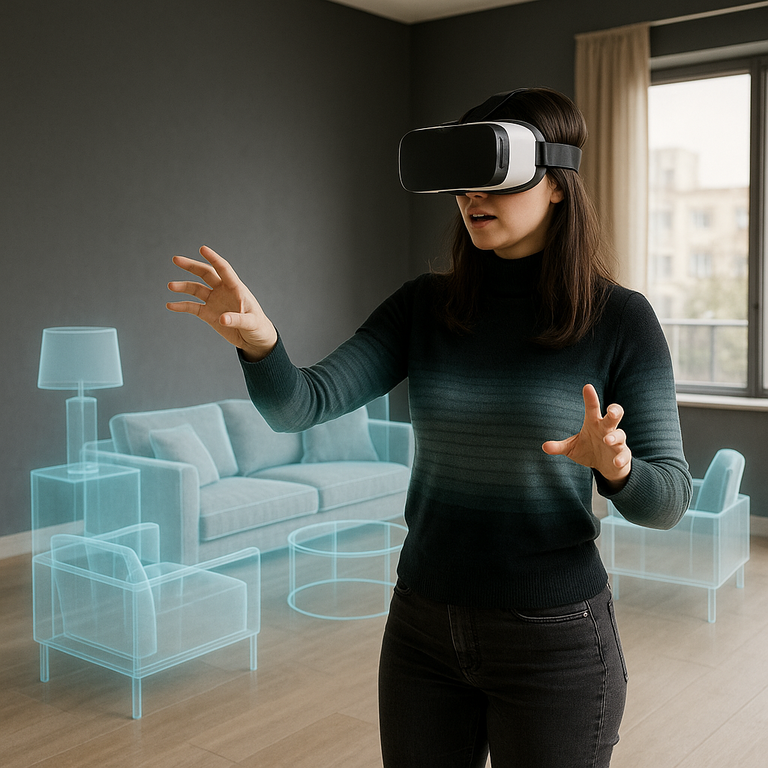Address
Studio 03
SUM Studios
1 Hartley Street
Sheffield
S2 3AQ
[email protected]
0114 399 1023

In today’s fast-moving property market, technology is becoming an essential tool for standing out. Two of the most innovative and impactful tools available to estate agents and developers are Augmented Reality (AR) and Virtual Reality (VR). While often used interchangeably, these technologies offer very different experiences, each with its strengths in real estate marketing.
So, what’s the difference between AR and VR, and how can they be used to enhance property marketing? Let’s break it down.
Augmented Reality overlays digital elements – like images, text, or 3D models – onto the real world. It’s typically accessed through smartphones, tablets, or AR glasses.
In real estate, AR allows potential buyers to use their phones or tablets to view enhancements on an existing space. For example, users could point their device at an empty room and see what it would look like fully furnished or renovated. It helps people visualise possibilities, which can be extremely powerful for off-plan developments or properties undergoing refurbishment.

Virtual Reality is a fully immersive digital experience that allows users to explore a computer-generated environment. This usually requires a VR headset, although some experiences are accessible on desktop or mobile devices.
In real estate marketing, VR offers virtual property tours where buyers can ‘walk through’ a home from anywhere in the world. Whether it’s a new build or a luxury flat, VR helps reduce the number of physical viewings while giving potential buyers a strong sense of the space.

Both technologies are now being integrated into property marketing in different ways.
AR is particularly effective for showcasing the potential of unfinished properties or bare spaces. A developer selling off-plan apartments can use AR to allow clients to view different layouts, finishes, and furniture options in real time. It’s interactive, mobile-friendly, and accessible for most buyers.
VR, on the other hand, provides an entirely immersive viewing experience. This is useful for overseas buyers, high-end listings, and time-strapped clients. A fully developed VR tour gives a detailed and engaging experience, often leaving a stronger impression than traditional photos or videos.
It depends on your goals.
AR is easier to scale and distribute. Because it works on mobile devices, clients can quickly engage with your property wherever they are. It’s great for helping people imagine what a space could become.
VR, however, is more impactful for full tours and storytelling. It can make clients feel like they’ve already walked through the property, helping them form an emotional connection before setting foot inside.
For many estate agencies and developers, combining both technologies offers the best of both worlds—AR provides interactive previews, and VR offers full immersive tours.
As buyers become more digitally savvy, their expectations for advanced and convenient property experiences continue to grow. AR and VR are no longer luxury extras—they’re fast becoming standard tools for serious marketing strategies.
Not only do these technologies help buyers visualise properties better, but they also speed up decision-making and reduce time wasted on unsuitable viewings. They’re also an excellent way to attract attention and boost engagement on property listings.
At Scene3D, we help estate agents and developers bring their listings to life using immersive Matterport 3D virtual tours. Whether you’re looking to showcase a single property or an entire portfolio, we provide professional, engaging, and high-quality virtual tour services tailored for the UK market. Get in touch with us today to discuss the details of your project!